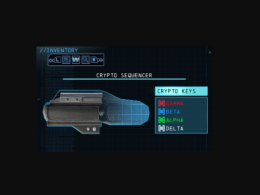
Solana is a popular layer 1 blockchain that has a mission to provide web3 infrastructure for everyone. The platform is open-source and has its own native cryptocurrency called SOL. The platform leverages SOL capabilities to help the network achieve consensus through proof-of-stake and also to pay for smart contract functionality through gas costs. Solana was launched in 2020 by Solana Labs which was founded in 2018 by Anatoly Yakovenko and Raj Gokal.
Solana is specifically made to handle large volumes of transactions per second while limiting the fee incurred for both developers and users to under $0.01. Its proof of stake network and other applications in Solana’s tech stack minimize its impact on the environment. The network is also energy efficient as a single Solana transaction consumes just as much energy as a few google searches.
Solana Network has recently unveiled a new solution that will significantly reduce the cost of storing data on-chain. These development was revealed by Solana’s tech lead Jon Wong, who said that the ‘state compression’ technology will bring the cost of minting 1 million NFTs down to 4 SOL, an equivalent of $110. To give perspective to the scale of comparison, it currently costs 1200 SOL, equivalent to more than $24 000, to store 1 million NFTs on Solana Blockchain.
Mr. Wong also revealed that after many stages of development, adoption and rollout compressed NFTs are now live on Solana’s beta mainnet. This solution aims to power the next wave of on-chain product experiences. He also described the technology as a cross-system effort because of the collaboration that took place across several firms to come up with the technology. These firms include Solana Foundation, Metaplex, Solana Labs, Phantom and Solfare.
The mechanism behind state compression works by leveraging Merkle trees, a hash-based data structure that is a generalization of the hash list. The technology also uses the security and decentralization of Solana’s base layer. Mr. Wong has also revealed that some projects built on Solana ecosystem are already making use of this technology to cut costs. He went ahead to mention a few including Dialect – a blockchain-based messaging service and Crossmint – a firm that deals in NFTs and API tooling. Other projects leveraging this technology include on-chain publisher Wordcel, Helium and Drip – an NFT distributor.
Currently, Solana’s native digital token SOL, is trading at $20 – registering a drop of 92% from its all time high of $259 in November of 2021.
Solana had a rough year in 2022 especially in the wake of FTX’s collapse. The network was marred by outages and overloads despite it being dabbed “the Ethereum killer” owing to its efficient and speed-first design. Reportedly, FTX and it affiliated companies held $1.2 billion worth of the SOL token and with the collapse of FTX the market imploded as investors began dumping the SOL.
With this new state compression technology, Solana is hoping to make a disruptive comeback.








